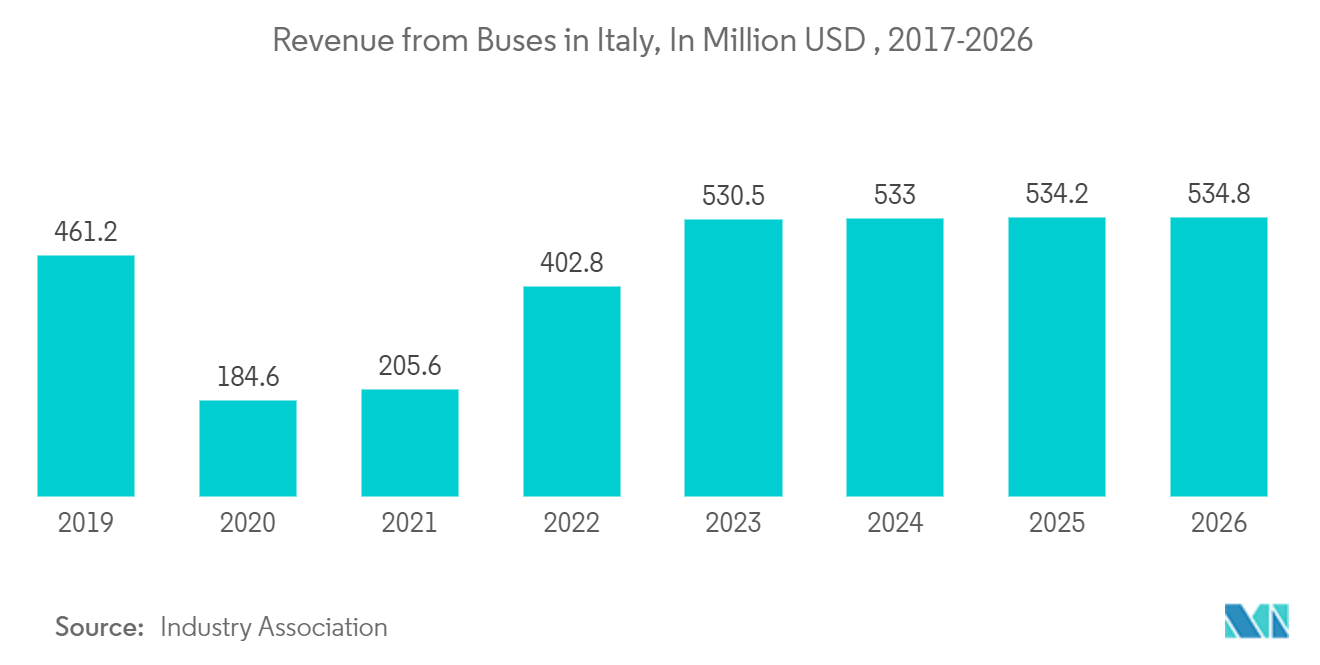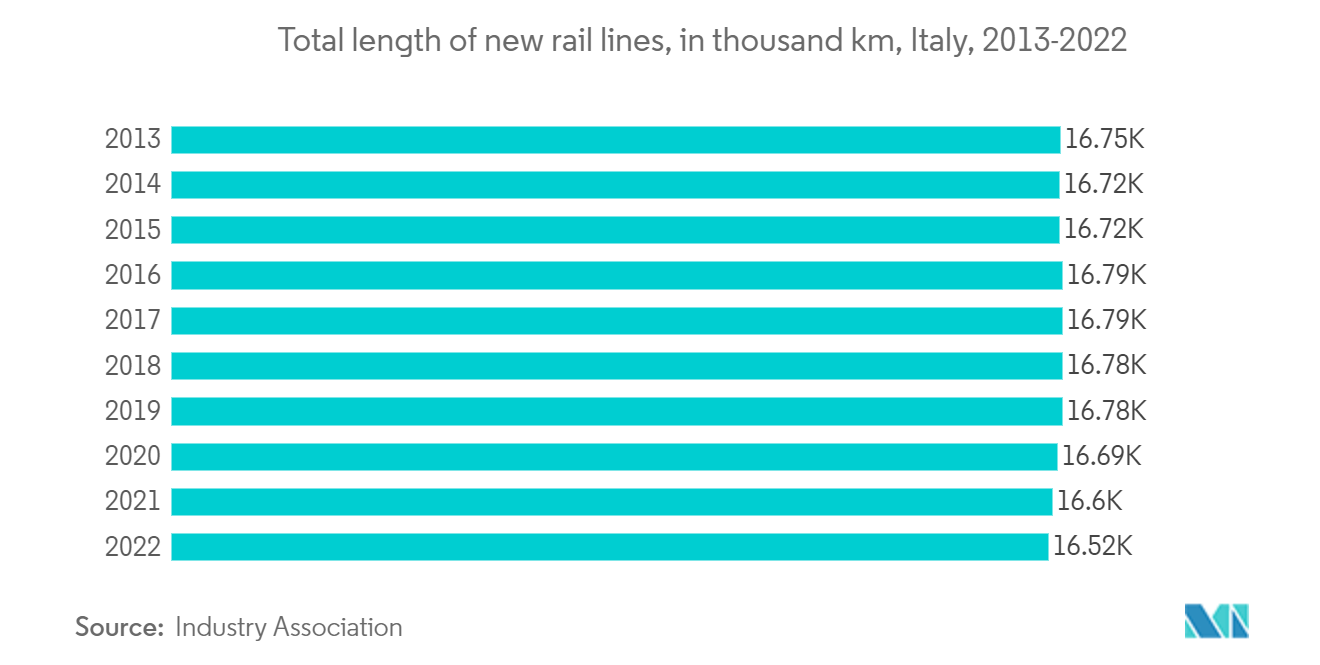Market Trends of Italy Transportation Infrastructure Construction Industry
Increasing Demand For Trolleybus in Italy
Italy has a notable increase in demand for trolleybuses, owing to the presence of reliable infrastructure for electric buses. The ongoing ‘zero-emission’ movement across European countries has compelled manufacturers to redefine their innovation and development strategies.
Stakeholders in the European trolley bus market are constantly leveraging cutting-edge technologies in an attempt to offer environmentally as well as operationally efficient trolley buses. Among all the European countries, Italy is expected to create a huge market demand for trolleybuses.
Also, Van Hool, one of the leading manufacturers, is entering into agreements with the local transport ministry to launch trolley buses for local public transportation. France and Greece are expected to lead Italy, in the view of supportive government policies, which are projected to flourish the sales of trolleybuses over the coming years.
The municipality of Avellino, placed some 50 km east of Naples in Southern Italy, eventually opened its new trolleybus route to the public on 3 April 2023. It took 23 years of planning, re-planning, public opinions, political discussions, construction of the line and delivery of the vehicles, and a long authorization process before this target could have been achieved. However, now the red Van Hool trolleybuses operate Monday- Saturday at half-hourly intervals between Via Fraternita della Misericordia and the railway station, over a length of 11 km (including return trip) serving 39 stops as published in the authorized agenda of the company.

Increasing Government Spending in Railways To Boost The Transportation Infrastructure Construction Sector
The infrastructure sector is witnessing robust growth in construction activities because, under the National Plan for Recovery and Resilience (NRRP), the Italian government approved USD 266 billion in 2021 for the renovation of the country’s economy after the pandemic crisis, which is being utilized in 2023 as well. From this recovery and resilience plans (RRPs) infrastructure for the sustainable mobility mission, the government has allocated EUR 32 billion (USD 34.45) for infrastructural investment, including EUR 28.3 billion (USD 30.47 billion) in high-speed railways and road maintenance EUR 4 billion (USD 4.31 billion) as well as EUR 3.7 billion (USD 3.98 billion) in intermodal transport and integrated logistics in 2022.
Due to the expected rise in demand from both freight and passenger sectors, under the RRPs mission 3, megaprojects will be constructed in the span of five years (2021-2026), such as the construction of Southbound high-speed rail links for passengers and freight, high-speed lines in the north connecting Europe, diagonal connections, and increasing port capacity by expanding the port constructions.
Another reason why transportation infrastructure construction activities are increasing in Italy is due to demand from the public. Italy’s state-held export credit agency SACE calculated in Q1 2023 that the total investment for framework comes to about EUR 100 billion (USD 107.66 billion) over the coming ten years. The report outlined a breakdown whereby the NRRP contributes EUR 40.01 billion (USD 43.08 billion), which the ministry will allocate to infrastructure projects. Added to this are EUR 20.11 billion (USD 21.65 billion) in supplementary civil sponsorship allocated for schemes with an advanced degree of complexity.
The budget allocated further capitalization of EUR 36.1 billion (USD 38.87 billion) to the MIMS, which is to be invested in upgrading the country’s mobility systems with a view to sustainable development. Adding up the numerous projects, the grand aggregated fund comes around to EUR 100 billion (USD 107.66 billion) to be spent over the following ten years to streamline the country’s infrastructure network, especially the transportation sector. At the center are major strategic projects, resembling as the development of the high-speed rail network, the completion of the TEN-T corridors, the advancement of roads, nodes, and regional networks, and the narrowing of the gap between the industrialized north and the underdeveloped south. This framework will modernize the country on the one hand and contribute to boosting its welfare and wealth on the other.


